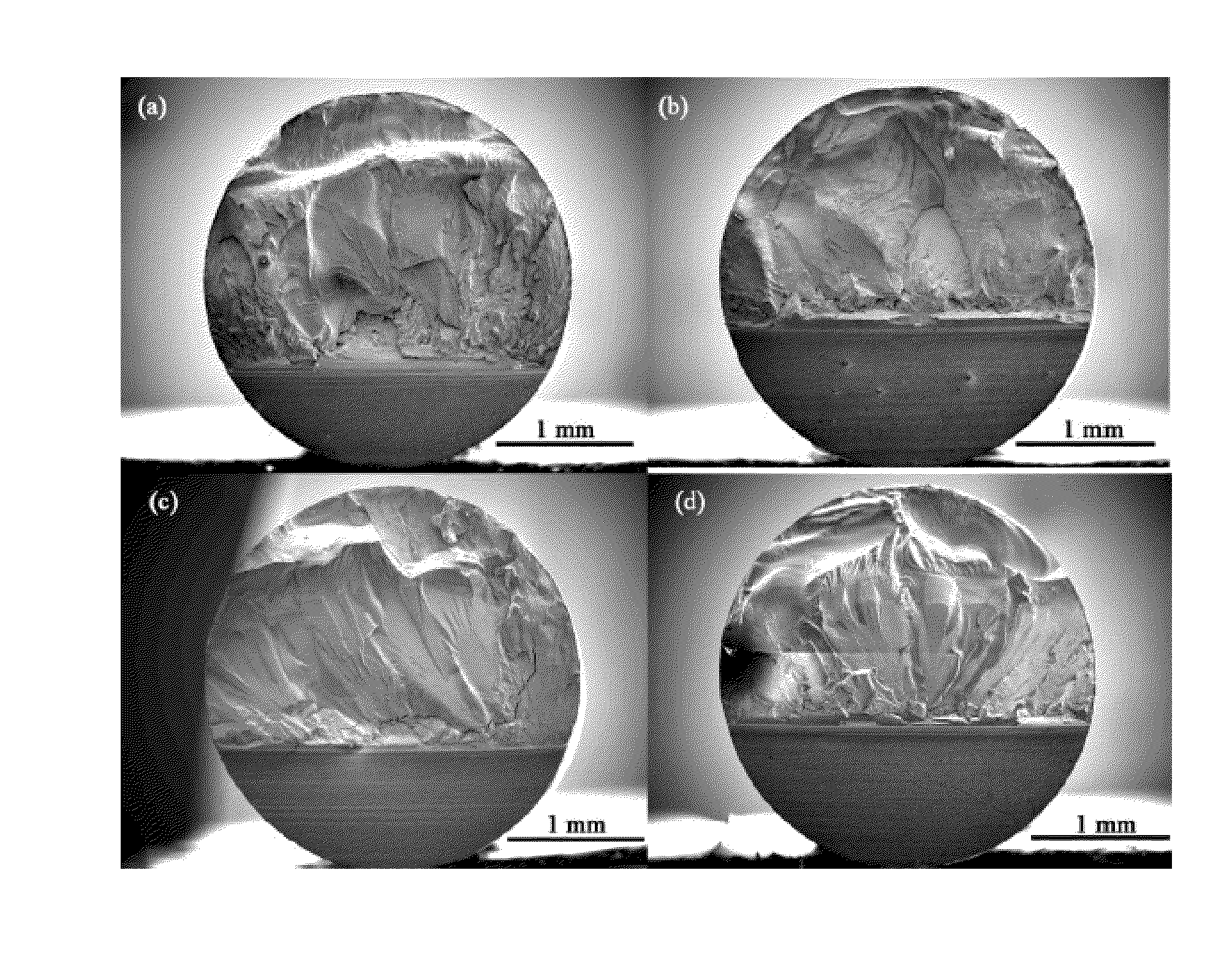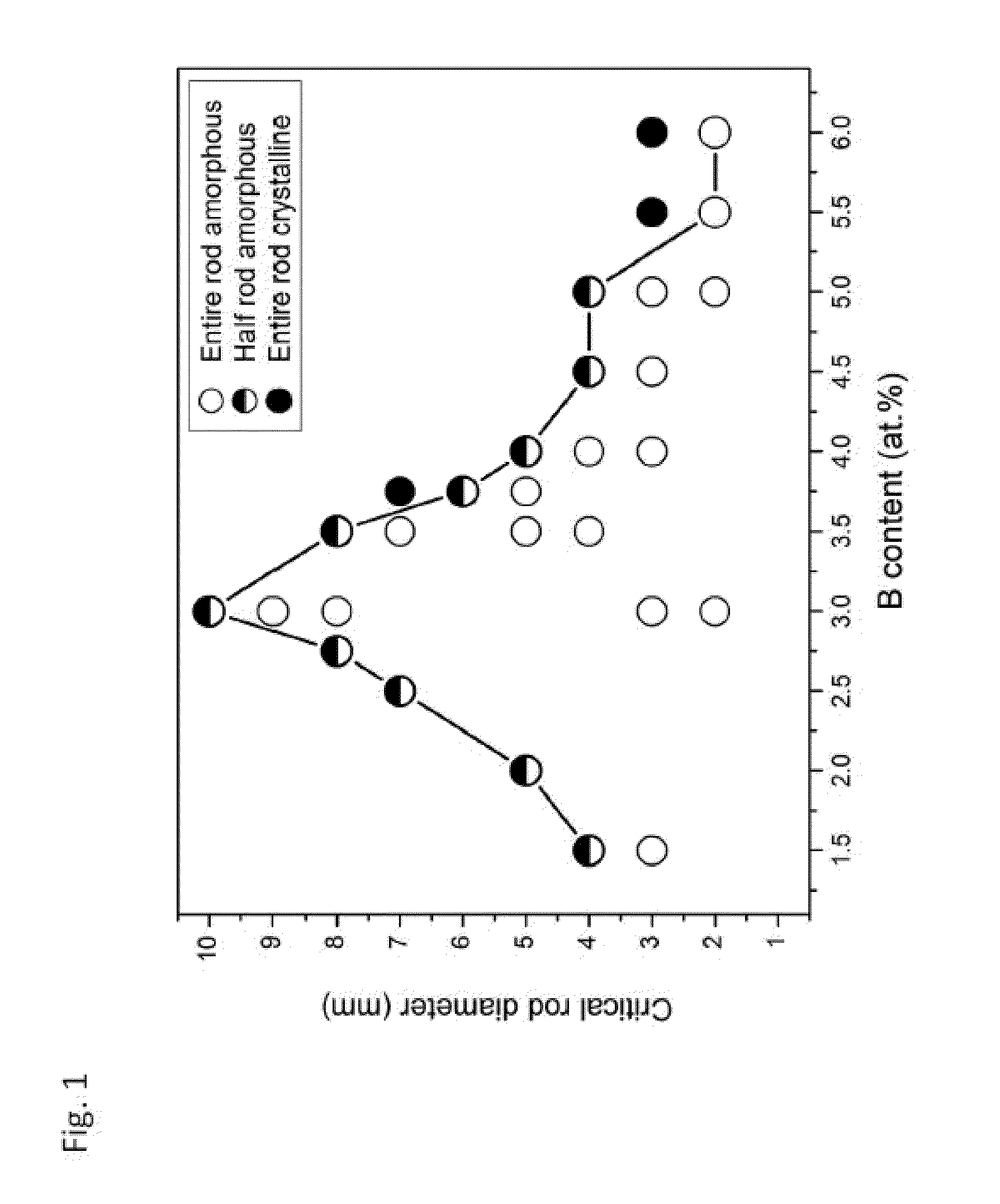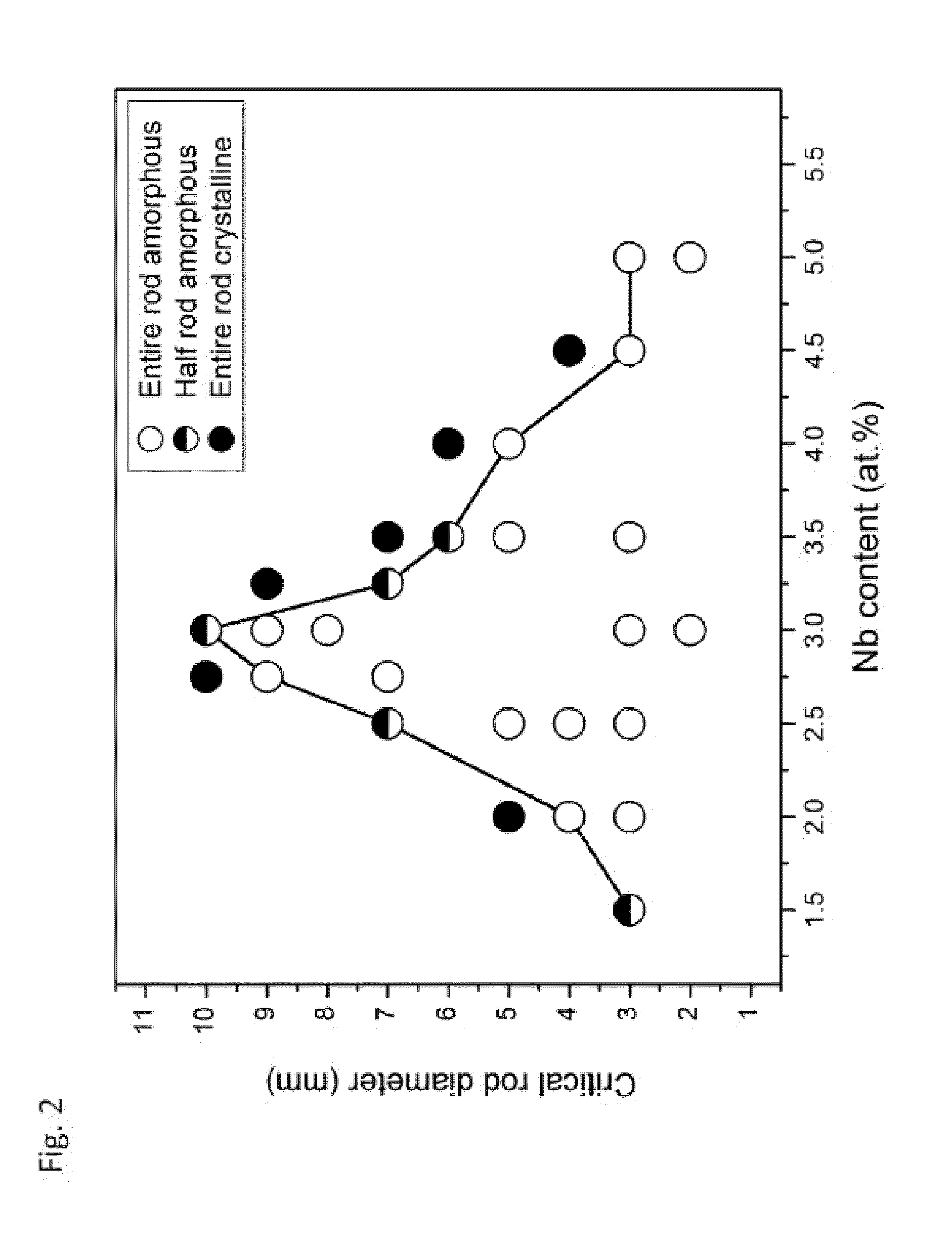Bulk Nickel-Based Chromium and Phosphorous Bearing Metallic Glasses
a technology of chromium-phosphorous bearing and metallic glasses, which is applied in the field of ni-based crand pbearing metallic glasses, can solve the problems of limited material viability, limited thickness in conventional ni-based crand pbearing alloys, and even possible formation of bulk glasses
- Summary
- Abstract
- Description
- Claims
- Application Information
AI Technical Summary
Benefits of technology
Problems solved by technology
Method used
Image
Examples
example 1
Method of Forming the Inventive Amorphous Alloys
[0222]A preferred method for producing the inventive alloys involves inductive melting of the appropriate amounts of elemental constituents in a quartz tube under inert atmosphere. The purity levels of the constituent elements were as follows: Ni 99.995%, Cr 99.996%, Nb 99.95%, Ta 99.95%, Si 99.9999%, P 99.9999%, and B 99.5%. A preferred method for producing glassy rods from the alloy ingots involves re-melting the ingots in quartz tubes of 0.5-mm thick walls in a furnace at 1100° C. or higher, and preferably between 1150 and 1250° C., under high purity argon and rapidly quenching in a room-temperature water bath. In general, amorphous articles from the alloy of the present disclosure can be produced by (1) re-melting the alloy ingots in quartz tubes of 0.5-mm thick walls, holding the melt at a temperature of about 1100° C. or higher, and preferably between 1150 and 1250° C., under inert atmosphere, and rapidly quenching in a liquid ba...
example 2
Test Methodology for Assessing Glass-Forming Ability
[0223]The glass-forming ability of each inventive alloy was assessed by determining the maximum rod diameter in which the amorphous phase can be formed when processed by the preferred method described above. X-ray diffraction with Cu—Kα radiation was performed to verify the amorphous structure of the inventive alloys. Images of fully amorphous rods made from exemplary amorphous alloys of the present disclosure with diameters ranging from 3 to 10 mm are provided in FIG. 56.
[0224]Exemplary alloy Ni68.6Cr8.7Nb3P16B3.2Si0.5 was found to exhibit particularly high glass-forming ability. It was not only able to form 10 mm amorphous rods when quenched in a quartz tube with 0.5 mm thick wall, but can also form 10 mm amorphous rods when quenched in a quartz tube with 1 mm thick wall. This suggests that the critical rod diameter assessed by quenching in quartz tubes with 0.5 mm thick walls should be between 11 and 12 mm. An X-ray diffractogra...
example 3
Test Methodology for Differential Scanning Calorimetry
[0225]Differential scanning calorimetry at a scan rate of 20° C. / min was performed to determine the glass-transition, crystallization, solidus, and liquidus temperatures of exemplary amorphous alloys.
PUM
| Property | Measurement | Unit |
|---|---|---|
| Temperature | aaaaa | aaaaa |
| Length | aaaaa | aaaaa |
| Length | aaaaa | aaaaa |
Abstract
Description
Claims
Application Information
 Login to View More
Login to View More - R&D
- Intellectual Property
- Life Sciences
- Materials
- Tech Scout
- Unparalleled Data Quality
- Higher Quality Content
- 60% Fewer Hallucinations
Browse by: Latest US Patents, China's latest patents, Technical Efficacy Thesaurus, Application Domain, Technology Topic, Popular Technical Reports.
© 2025 PatSnap. All rights reserved.Legal|Privacy policy|Modern Slavery Act Transparency Statement|Sitemap|About US| Contact US: help@patsnap.com



